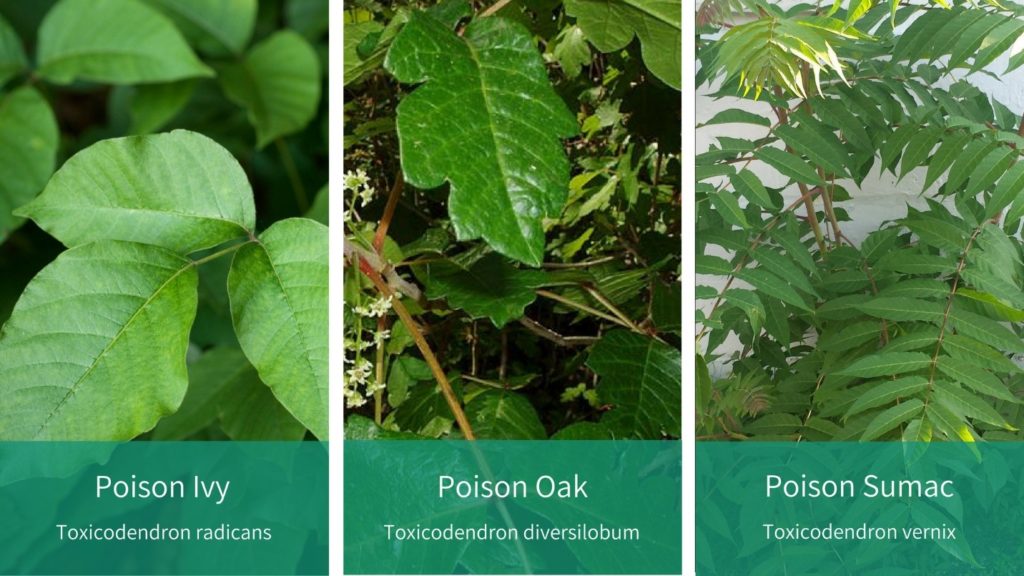Protecting Yourself from Poisonous Plants
Any person working outdoors is at risk of exposure to poisonous plants, such as poison ivy, poison oak, and poison sumac. When in contact with skin, the sap oil (urushiol) of these plants can cause an allergic reaction. Burning these poisonous plants produces smoke that, when inhaled, can cause lung irritation.
Workers may become exposed through:
- Direct contact with the plant
- Indirect contact (touching tools, animals, or clothing with urushiol on them)
- Inhalation of particles containing urushiol from burning plants
Symptoms of Skin Contact
- Red rash within a few days of contact
- Swelling
- Itching
- Possible bumps, patches, streaking or weeping blisters NOTE: Blister fluids are not contagious
First Aid
If you are exposed to a poisonous plant:
- Immediately rinse skin with rubbing alcohol, poison plant wash, or degreasing soap (such as dishwashing soap) or detergent, and lots of water.
- Rinse frequently so that wash solutions do not dry on the skin and further spread the urushiol.
- Scrub under nails with a brush.
- Apply wet compresses, calamine lotion, or hydrocortisone cream to the skin to reduce itching and blistering.
- Oatmeal baths may relieve itching.
- An antihistamine may help relieve itching.
- NOTE: Drowsiness may occur.
- In severe cases or if the rash is on the face or genitals, seek professional medical attention.
- Call 911 or go to a hospital emergency room if you have a severe allergic reaction, such as swelling or difficulty breathing, or have had a severe reaction in the past.

Protect Yourself
- Wear long sleeves, long pants, boots, and gloves.
- Wash exposed clothing separately in hot water with detergent.
- Barrier skin creams, such as lotion containing bentoquatum, may offer some protection.
- After use, clean tools with rubbing alcohol or soap and lots of water. Urushiol can remain active on the surface of objects for up to 5 years.
- Wear disposable gloves during this process.
- Do not burn plants or brush piles that may contain poison ivy, poison oak, or poison sumac.
- Inhaling smoke from burning plants can cause severe allergic respiratory problems.
When exposure to burning poisonous plants is unavoidable, employers should provide workers with:
- A NIOSH-certified half-face piece particulate respirator rated R–95, P–95, or better. This recommendation does NOT apply to wildland firefighters, who may require a higher level of protection.
- These respirators should protect against exposure to burning poisonous plants, but will not protect against all possible combustion products in smoke, such as carbon monoxide.
- Respirators must be worn correctly and consistently throughout the time they are used.
- For respirators to be effective there must be a tight seal between the user’s face and the respirator.
- Respirators must be used in the context of a written comprehensive respiratory protection program (see OSHA Respiratory Protection standard 29 CFR 1910.134).
- For more information about respirators, visit https://www.cdc.gov/niosh/topics/respirators/